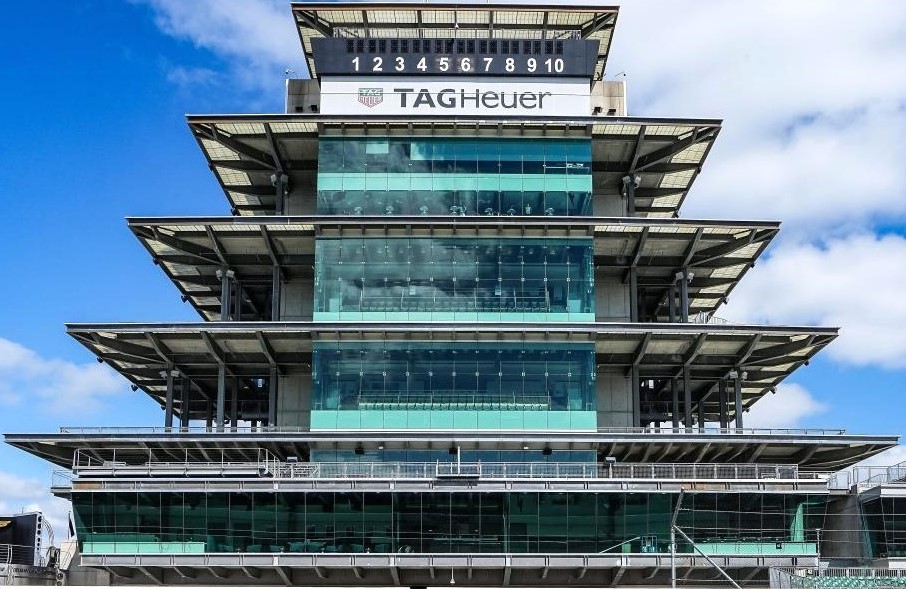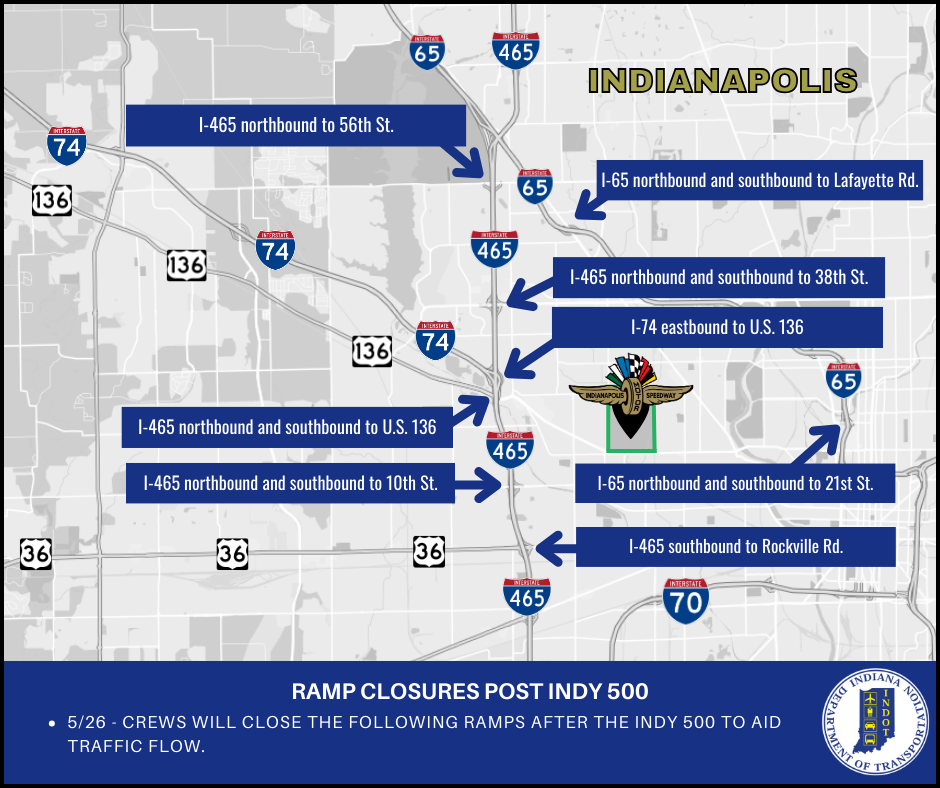May 2024
During the upcoming Indianapolis 500, INDOT will monitor race-day traffic by keeping close watch on Indiana’s interstate highway system from within a command room at the famed Indianapolis Motor Speedway (IMS) pagoda.
INDOT’s Traffic Management team works race day in the pagoda’s Public Safety Command, where they monitor hundreds of closed-circuit television cameras and overall traffic on the Indianapolis interstate system.
As congestion occurs on the interstates and the ramps leading to the track, the Traffic Management team will change traffic patterns using both permanent and portable dynamic message boards. Traffic information is also distributed in real time through INDOT TrafficWise application, public web pages, email distribution lists, local media, as well as other partners that distribute traffic information.
Traffic for the Indy 500 involves not only INDOT staff but hundreds of law enforcement officers from a multitude of agencies. INDOT not only make these changes but must coordinate with law enforcement to make sure proposed changes fit the overall traffic plan for the event. Traffic planning begins months before the race and continues to be refined and improved each year.
All Indy 500-related signs are located in the Indianapolis area. Inbound messages focus on getting fans to the track. Outbound messages are geared to explaining what exits are closed and to expect heavy traffic on I-465.
Traffic Management is not the only group of INDOT employees involved with race day, when an estimated 300,000 plus fans hit the roads to reach — and then leave — the speedway. Our Hoosier Helper patrols concentrate efforts on Indianapolis’ west side on race day.
Additionally, approximately 50 INDOT Maintenance employees help open and close roadways and ramps, plus perform other duties, on race day. This year, these maintenance crews will close 13 ramps near the conclusion of the race to aid the outbound traffic flow and enable law enforcement to focus on the existing traffic from the race.
INDOT also modifies traffic-signal timings for signals that are not taken over by law enforcement officers.
Leading up to the race, our Traffic Management Center personnel prepare the messaging plan. Also, INDOT coordinates with the Indianapolis Metropolitan Police Department, Speedway Police Department, IMS Safety, Indiana Department of Homeland Security, and Indiana State Police as well as a multitude of local, state, and federal agencies to plan and operate race-day activities.
Official race-day traffic plans began in 1947 in reaction to the previous year’s traffic mess leading to the track for the first post-World War II Indy 500. INDOT and the TMC became significantly involved in 2001 and since have annually created an official traffic plan to manage interstate congestion before and after the race.



